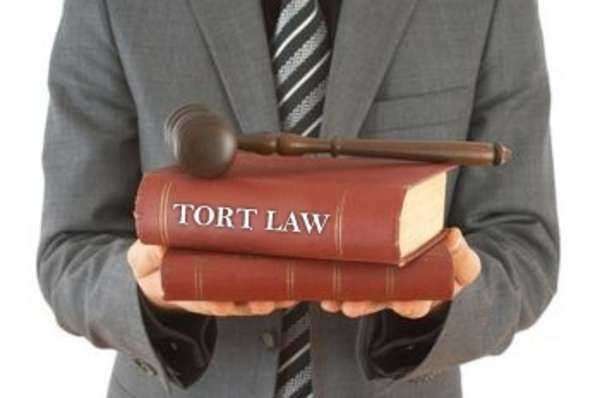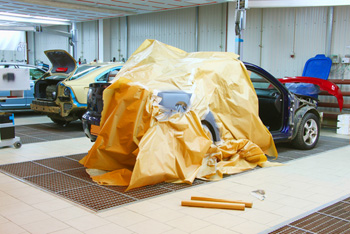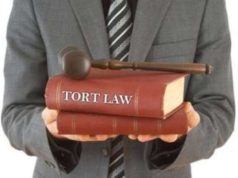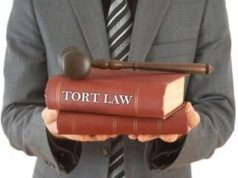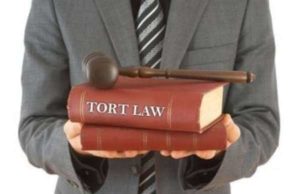 History/Meaning:
History/Meaning:
The term nuisance first emerged in the thirteenth century and referred to actions that took place on the land of the defendant, but interfered with the rights of the plaintiff. A writ of nuisance could be obtained to take action against the defendant. This action gave rise to the modern day private nuisance, and eventually public nuisance, which was any crime that was committed against the crown.
At this point in time the term was very widely used and vague in its meaning; any type of wrongdoing was often termed nuisance. In modern tort law there are different types of nuisances: public, private, and absolute nuisances. A private nuisance effects one individuals enjoyment of his land, while a public nuisance effects a larger amount of citizens, or the public in general. Absolute nuisances are nuisances for which the defendant is strictly liable.
Private Nuisance:
In a private nuisance, a defendant engages in some activity that interferes with the plaintiff’s right to enjoy his property. A land owner is entitled to a certain level of comfort that is free from interference while on his private property. Private nuisance can come in the form of physical damage to the property or the disturbance of comfort.
Tort law distinguishes a public nuisance from a private one based on the amount of people that are effected; a private nuisance may only effect a small amount of people. A private land owner can bring action against another for private nuisance, as long as he can prove the defendant interfered with his ability to enjoy the land.
Substantial and Unreasonable Interference:
In order for a defendant’s interference to be considered a nuisance, it must be both substantial and unreasonable. A complaint by an overly sensitive plaintiff will not be considered a nuisance on the part of the defendant, because the offense must be something that would disturb the average, reasonable person. The interference must cause substantial damage to the plaintiff, and the interference with the plaintiff’s comfort must be greater than the benefits of the defendant’s conduct.
Because nuisance is a tort that is based on the reasonable person standard, it is very dependent on the individual circumstances of a situation. A nuisance per se is an act that is always considered to cause a nuisance, while a nuisance in fact depends entirely on the situation. A judge or jury will make the decision as to whether the defendant’s actions constitute a nuisance.
Injunctive Relief:
If it is found that a defendant created a nuisance, he will be responsible for providing relief. When the court issues an injunction, it requires the plaintiff to either start or stop doing a specific action. In a nuisance case, the injunction usually requires the defendant’s behavior to be put on a restriction, such as limiting the number of hours in which he can participate in the behavior, or it can be prohibited entirely.
In obtaining injunctive relief, the plaintiff may also request a temporary restraining order which will prohibit the defendant from engaging in the alleged nuisance until the courts have issue their ruling. The court may then issue a permanent injunction; if the defendant violates this injunction he will be subject to fines and possible imprisonment.
Factors of Importance:
The courts consider several factors when determining whether the defendant has committed a nuisance and whether the plaintiff is entitled to a remedy. The defendant’s actions must considerably interfere with the plaintiff’s enjoyment of property and violate their right to comfort. The courts will weigh the interests of both parties and consider whether the defendant has made an attempts to minimize the alleged nuisance, or if the defendant has the means to do so.
In order to be considered a nuisance, the defendant’s actions must be continuous over time and not an infrequent occurrence. The situation in which the tort was committed is taken into account, and may be dependent on characteristics of the area. If the defendant’s actions meet the requirements of a nuisance, then the courts will issue some sort of remedy for the situation to compensate the plaintiff.
“Absolute” Nuisance:Any intentional pollution or interference with real property rights or a trespass into private property is actionable. For a plaintiff to claim absolute nuisance, he must prove that the defendant’s actions were committed intentionally and not due to negligence. In an intentional tort, the actor is aware that the consequences are very likely to occur. Remedies for absolute nuisances include abatement and injunction as well as monetary damages
Public Nuisance/Remedies:
In a public nuisance, the defendant’s actions effect a large or indefinite number of people, such as the community as a whole. When plaintiffs are effected by a private or public nuisance, they have the right to seek relief for damages from the defendant. Sometimes monetary damages are awarded in nuisance cases, but more often, it is equitable damages. An injunction requires the defendant to permanently refrain from the nuisance activity, or limit it to a certain time of day or amount of hours. Sometimes money damages are offered to the plaintiff and the defendant is still permitted to engage in the activity.
Negligence:
A nuisance resulting from negligence refers to an interference with the property rights of a land owner by a defendant who was not exercising proper care. For example, hosting an excessively loud party during a time when the defendant should reasonably believe that the plaintiff would be sleeping is considered a nuisance. The defendant did not take proper care to ensure that his acts would not interfere with the comforts of others.
Strict Liability:
If the courts determine that the nuisance that exists is one involving hazordous activity towards others, then the defendant will be subject to strict liability. This differs from negligence because even if the defendant took all possible precaution to guard against harm, it is the nature of the defendant’s activities hold him strictly liable. If a defendant is storing hazardous chemicals on his property and, despite the utmost care, these chemicals somehow interfere with the plaintiff, he is liable for the damages caused, whether it be physical damage or interference to enjoyment.


